|
|
|
Sort Order |
|
|
|
Items / Page
|
|
|
|
|
|
|
| Srl | Item |
| 1 |
ID:
089984
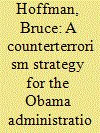

|
|
|
|
|
| Publication |
2009.
|
| Summary/Abstract |
This article assesses the scope and nature of the current terrorist threat to the United States and suggests a strategy to counter it. Al-Qaeda continues to pose the most serious terrorist threat to the U.S. today. If the September 11, 2001 attacks have taught us anything, it is that al-Qaeda is most dangerous when it has a sanctuary or safe haven from which to plan and plot attacks. Al-Qaeda has acquired such a sanctuary in Pakistan's Federal Administered Tribal Areas (FATA) and its North-West Frontier Province (NWFP) and surrounding environs. Accordingly, the highest priority for the new American presidential administration must be to refocus our-and our allies'-attention on Afghanistan and Pakistan, where al-Qaeda began to collapse after 2001, but has now re-grouped. This will entail understanding that al-Qaeda and its local militant jihadi allies cannot be defeated by military means alone. Success will require a dual strategy of systematically destroying and weakening enemy capabilities-that is, continuing to kill and capture al-Qaeda commanders and operatives-along with breaking the cycle of terrorist recruitment among radicalized "bunches of guys" as well as more effectively countering al-Qaeda's effective information operations. The U.S. thus requires a strategy that harnesses the overwhelming kinetic force of the American military as part of a comprehensive vision to transform other, non-kinetic instruments of national power in order to deal more effectively with irregular and unconventional threats. This article first discusses the scope and details of the terrorist threat today and then proposes a counterterrorism strategy for the new presidential administration. It focuses first on creating a micro approach to address the deteriorating situation in both Afghanistan and Pakistan. It then considers the requirements of a broader macro strategy to counter terrorism and insurgency.
|
|
|
|
|
|
|
|
|
|
|
|
|
|
|
|
| 2 |
ID:
156901
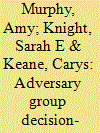

|
|
|
|
|
| Summary/Abstract |
Anticipating whether an adversary group will continue to use their usual (“conventional”), expected attack methods is important for military and counterterrorism practitioners tasked with protecting the security of others. Conventional attack methods are by their nature easier to plan and prepare for whilst “innovative” methods may take those responsible for security and counterterrorism by surprise and, as such, may have more impact and more serious consequences. The present study aimed to develop understanding of how, when, and why adversary groups might decide to use conventional attack methods or opt to do something innovative instead. A literature review was conducted and findings were applied to develop a thorough understanding of the decision-making process that underlies an adversary group's choice of attack method. Identified are three stages preceding the execution of an attack: a) “strategic direction”; b) “incubation”; and c) “planning and preparation,” plus “overarching” and “contextual” factors that can influence the process at each stage. It is suggested that it is these factors and how they influence decision-making that result in innovative methods being used to execute an attack, or convention prevailing. Findings can aid practitioners and policy-makers in counterterrorism, security, and law enforcement, to support their understanding, evaluation, and countering of current and future threats.
|
|
|
|
|
|
|
|
|
|
|
|
|
|
|
|
| 3 |
ID:
094508
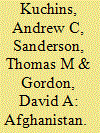

|
|
|
| 4 |
ID:
128389
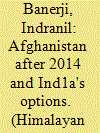

|
|
|
|
|
| Publication |
2011.
|
| Summary/Abstract |
Current speculation on the future of Afghanistan revolves around 2014, the year US forces are supposed to finally end their Afghan War mission. The key question is what will happen once the Americans depart? What sort of Afghanistan would emerge after that? Would the Taliban once again overrun that country and establish a ruthless Islamic emirate? Or would the pro-West regime in Kabul survive with the aid of the fledgling Afghan National Army and police? And where would all that leave India?
|
|
|
|
|
|
|
|
|
|
|
|
|
|
|
|
| 5 |
ID:
173803
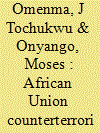

|
|
|
|
|
| Summary/Abstract |
Attacks from violent extremist organisations have reached unprecedented levels in Africa. Boko Haram, al-Shabaab, al-Qaeda in the Islamic Maghreb and Islamic State and Sinai Peninsula activities account for the majority of high attacks and fatality rates. Their membership cuts across national borders; some have established a presence in local communities, while others are controlling territories in a number of states. This continues to happen despite regional measures such as the Algiers Plan of Action on the Prevention and Combating of Terrorism (2002) and the African Model Anti-Terrorism Law (2011) to contain the activities of violent extremist groups on the continent. The prevailing argument shows that the African Union has initiated several legislations and protocols to contain terrorism on the continent, but the Union lacks the capacity to enforce legislations. Relying on the cost–benefit theoretical explication, we conclude that member states of the East African Community prefer to partner with external organisations in counterterrorism programmes which result in conflicting cross-border rules and challenges in countering violent extremism in Africa.
|
|
|
|
|
|
|
|
|
|
|
|
|
|
|
|
| 6 |
ID:
157419
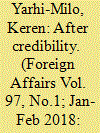

|
|
|
|
|
| Summary/Abstract |
Believe me.” U.S. President Donald Trump has used that phrase countless times, whether he is talking about counterterrorism (“I know more about ISIS than the generals do. Believe me”), building a wall along the U.S.-Mexican border (“Believe me, one way or the other, we’re going to get that wall”), or the Iran nuclear deal (“Believe me. Oh, believe me. . . . It’s a bad deal”).
|
|
|
|
|
|
|
|
|
|
|
|
|
|
|
|
| 7 |
ID:
159899


|
|
|
|
|
| Summary/Abstract |
Al Qaeda leaders have consistently praised the Chechen insurgents as an exemplary front of global jihad. Ayman al-Zawahiri recently applauded the steadfastness of the Chechen rebels and indicated that their resolve for jihad is worthy of emulation. Ever since the world found out about a war going on in the Muslim republic in the North Caucasus, Al Qaeda leadership has attempted to represent the Chechen struggle as one of its own battlefields. In turn, the Russian government has tried to justify its policies in the North Caucasus through demonstrating to the world that the Kremlin is fighting nothing less than Osama bin Laden’s agents in Chechnya. The North Caucasus insurgents in turn have embraced some of Al Qaeda’s narratives. While such narratives have proliferated, the factual evidence to show the direct links between the North Caucasus insurgents and Al Qaeda is still lacking. The article examines how terrorist groups such as Al Qaeda use framing for strategic ends. The evidence discussed here suggests that Al Qaeda, the North Caucasus insurgents, and the Russian government have adopted similar narratives. However, the lack of evidence to back up such narratives indicates the differences in reasons driving the convergence of the narratives.
|
|
|
|
|
|
|
|
|
|
|
|
|
|
|
|
| 8 |
ID:
090199
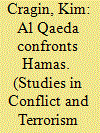

|
|
|
|
|
| Publication |
2009.
|
| Summary/Abstract |
Almost eight years after the September 2001 attacks, U.S. counterterrorism strategy would benefit from a clearer definition of its adversaries. Some have suggested that U.S. counterterrorism policy focus primarily on Sunni jihadists. This term would account for groups such as Al Qaeda and the Abu Sayyaf Group in the Philippines, but not Shi'ite militias in Iraq or Hizbullah. Although any attempt to narrow the scope of U.S. counterterrorism strategy has merit, it is worth noting that important distinctions exist between the various groups. To explore these distinctions, this article examines the different historical trajectories and current arguments between two of the most well-known Sunni jihadists: Al Qaeda and Hamas.
|
|
|
|
|
|
|
|
|
|
|
|
|
|
|
|
| 9 |
ID:
178933
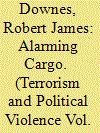

|
|
|
|
|
| Summary/Abstract |
Programme CYCLAMEN was initiated to manage the risk of non-conventional terrorism in the United Kingdom following Al-Qaeda’s attacks against the United States in 2001. Under Programme CYCLAMEN, the UK developed a border monitoring capability to detect and deter the illicit cross-border movement of radiological and nuclear materials by malicious non-state actors. This paper examines the development of border monitoring technologies before and after 9/11 with a focus on Programme CYCLAMEN using two models of state response to terrorism. Under the Control Model, state agencies seek to manage the risk associated with terrorism through disruption of terrorist activities. Under the Regulatory Model, actions are conceptualised as safeguarding public health and safety from various sources of risk including terrorism. The Regulatory Model is found to be dominant before 9/11 but the Control Model dominated thereafter and Programme CYCLAMEN is best understood as emanating from the Control Model. However, earlier action under the Regulatory Model shaped later consideration of this particular border-based protective security measure. This paper explores this shaping process and concludes that the Regulatory Model is under-considered as a model of state response to terrorism.
|
|
|
|
|
|
|
|
|
|
|
|
|
|
|
|
| 10 |
ID:
092483
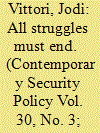

|
|
|
|
|
| Publication |
2009.
|
| Summary/Abstract |
Audrey Kurth Cronin wrote that Terrorism, like war, never ends; however, individual terrorist campaigns and the groups that wage them always do. In order to understand whether counterterrorism strategies and methods are effective in shortening the life-span of individual terrorist groups, scholars and statesmen must first recognize what the survival rate of a terrorist organization is, and what factors contribute to it-a topic that remains understand.
|
|
|
|
|
|
|
|
|
|
|
|
|
|
|
|
| 11 |
ID:
104713
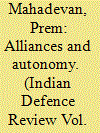

|
|
|
| 12 |
ID:
128975
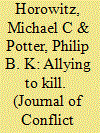

|
|
|
|
|
| Publication |
2014.
|
| Summary/Abstract |
Terrorist organizations do not operate in isolation. Instead, they forge alliances with one another, which generate a tight network of intergroup relationships. We argue that these relationships serve to increase group capacity, manifesting itself in the ability of a group to conduct deadly attacks. However, groups are notably judicious when they forge these cooperative ties, preferring to link to the strongest groups to which they have access. The result of this process of preferential attachment is a core/periphery structure in the broader network of alliances. Moreover, groups with ties to organizations at the core of the broader universe of relationships reap more rewards than those with large numbers of less meaningful alliances. Terrorism research and counterterrorism policy should assess terrorist organizations in the broader context of their interrelationships and depth of alliances rather than in isolation.
|
|
|
|
|
|
|
|
|
|
|
|
|
|
|
|
| 13 |
ID:
154988
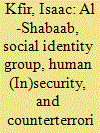

|
|
|
|
|
| Summary/Abstract |
This article examines the link between human security, social identity, and al-Shabaab. The first section explores how social identity group theory can help explain al-Shabaab's recruitment. The second part focuses on the counterterrorism campaign against al-Shabaab, which involves decapitation, aggressive peacekeeping through a proxy in the shape of the African Union Mission in Somalia, and the role of a domestic de-radicalization program. The article concludes that al-Shabaab's allure is in decline and the group is facing internal turmoil, which makes its overtures toward the Islamic State of Iraq and the Levant very dangerous, as al-Shabaab could act as an effective conduit between the Arabian Peninsula and Africa.
|
|
|
|
|
|
|
|
|
|
|
|
|
|
|
|
| 14 |
ID:
117109
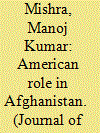

|
|
|
| 15 |
ID:
165188


|
|
|
|
|
| Summary/Abstract |
Increasing attention paid to US casualties in far-flung places such as Tongo Tongo, Niger, and headlines claiming ‘secret wars’ have fueled discussion about American military’s involvement in Africa. Though the continent has been a part of the American way of war since the beginnings of the US – consider the early combat actions of US Marines in Tripoli –, current African conflicts are challenging our understanding of war and approaches to winning it. This article examines the ways America seeks to achieve its ends in Africa with a particular focus upon the last 10 years of US counter-terrorism and stability operations in Niger and the Sahel Region. The author proposes unifying American, Allied, and partner efforts through a strategy of Active Containment.
|
|
|
|
|
|
|
|
|
|
|
|
|
|
|
|
| 16 |
ID:
094736


|
|
|
|
|
| Publication |
2010.
|
| Summary/Abstract |
The authors model a terrorist organization's choice over the scale and planning horizon of terror attacks and the consequences for the organization's evolution. The organization can engage in short-term attacks planned and executed in a single period, characterized by a low fixed cost and relatively high marginal cost, and longer term attacks planned and executed over two periods, having a high fixed cost but relatively low marginal cost. Longer term attacks require more resources and cause more damage if successful. Successful attacks increase the organization's size; in addition, the organization has a natural growth rate. Attacks can fail because of failed execution or counterterror interdiction. In a two-period version of this model, the authors analyze the terror organization's attack decisions. They use simulations to characterize optimal strategies and explore their implications for the growth of the organization. The authors identify a set of strategic regimes, and the results show that they always occur in a fixed order as a function of the organization's initial strength.
|
|
|
|
|
|
|
|
|
|
|
|
|
|
|
|
| 17 |
ID:
175065
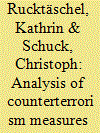

|
|
|
|
|
| Summary/Abstract |
This article analyzes counterterrorism (CT) measures that have been developed and implemented since the 2002 Bali attacks, paying special attention to the presidencies of Yudhoyono and Widodo. On the basis of anti-terrorism concepts, current findings of anti-terrorism research will be applied to the case of Indonesia, whereby we will distinguish between reactive and preventive measures and will show how they interact. Here, the revision of existing anti-terror laws carried out by the Indonesian Parliament in May 2018 will receive particular attention. As will be documented, in spite of the initially quite promising short-term effects of CT measures, the already strained relationship between the police and the military regarding jurisdiction has become even more critical in recent years. Since only a few religious or civil authorities have been included to a large extent in attempts to prevent terrorism, these measures are not likely to be as effective and lasting as they might have been.
|
|
|
|
|
|
|
|
|
|
|
|
|
|
|
|
| 18 |
ID:
128871


|
|
|
|
|
| Publication |
2014.
|
| Summary/Abstract |
This article presents an eclectic review of the analytical study of terrorism that views all agents as rational decisionmakers. This analytical literature began in earnest with the seminal study of US skyjackings by William Landes in 1978. After 11 September 2001, the analytical literature on terrorism grew rapidly. Based on policy relevance, my survey article identifies five key areas of intense research interests. These include analyses of terrorist attack trends, the economic consequences of terrorism, the study of counterterrorism effectiveness, the causes of terrorism, and the relationship of terrorism and liberal democracies. New developments in the field focused on distinguishing key differences between domestic and transnational terrorism. Additionally, recent game-theoretic advances permitted more active agents and stages to the games. Other major developments involved the study of networked terrorists and the role of counterterrorism foreign aid. Fruitful future directions include using advanced econometric methods to discern the true impact of terrorism on growth, applying spatial econometrics to the study of terrorism, ascertaining the determinants of terrorist groups' longevity, and learning how to foster international counterterrorism cooperation.
|
|
|
|
|
|
|
|
|
|
|
|
|
|
|
|
| 19 |
ID:
183018
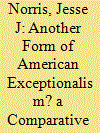

|
|
|
|
|
| Summary/Abstract |
Sting operations can potentially thwart terrorist plots, but could also threaten civil liberties and alienate communities, making them a critical subject for counterterrorism research. Yet despite considerable research on U.S. cases, little is known about terrorism stings elsewhere. How common are such cases abroad, and how many feature strong entrapment claims or result in entrapment-related acquittals? In this study, data are gathered about non-U.S. terrorism stings, each of which is evaluated for entrapment indicators. Results show that, contrary to claims of American exceptionalism, terrorism stings could be identified in twenty-one countries, and the average number of entrapment indicators per case is similar between the U.S. and several countries. In addition, several non-U.S. cases present entrapment claims as strong as some of the most-criticized U.S. cases. However, relatively few non-U.S. terrorism stings (fifty-one) could be identified, while there are 156 U.S. cases. In addition, unlike in the U.S., courts have acquitted defendants on entrapment grounds in a high proportion of non-U.S. cases. Political, cultural, and legal differences between the U.S. and other countries, and certain cross-national commonalities, are identified as likely accounting for these results. Potential implications of these findings for terrorism prevention and legal reform are considered.
|
|
|
|
|
|
|
|
|
|
|
|
|
|
|
|
| 20 |
ID:
004554
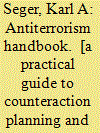

|
|
|
|
|
| Publication |
New Delhi, Lancers International, 1990.
|
| Description |
x,229p.
|
| Standard Number |
8170621321
|
|
|
|
|
|
|
|
|
|
|
|
Copies: C:1/I:0,R:0,Q:0
Circulation
| Accession# | Call# | Current Location | Status | Policy | Location |
| 035247 | 303.635/SEG 035247 | Main | On Shelf | General | |
|
|
|
|
|
|
|
|
|